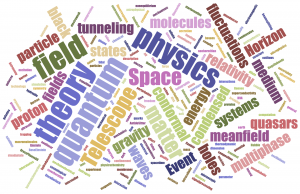The Physics Department Colloquium: April 15, 2024, 2:15pm IDT
Doron Chelouche (University of Haifa) | Unlocking Line-Locking Phenomena in Quasars | Quasars are unique phases in the lifetime of galaxies during which their central supermassive black hole is in the process of accreting material at a high rate. This phase is accompanied by the ejection of material from the central regions of the galaxy with outflow speeds of order 10,000 km/sec, which can substantially affect the large-scale environment of the quasar. In this talk, the phenomenon of quasar outflows will be reviewed as well its connection to “big” astrophysical problems pertaining to the formation and evolution of galaxies, the enrichment of the inter-galactic medium with heavy elements, and the growth of supermassive black holes. Specifically, the largely overlooked phenomenon of line locking, which appears to be very common in quasar outflows, will be reviewed, and its physical implications for quasar- outflow physics will be discussed. It will be shown that the phenomenon of line-locking poses significant challenges to current theories of quasar outflows with implications for the physical mechanisms underlying cloud formation and acceleration, as well as for the confinement of such clouds over dynamical timescales in the interstellar medium of (active) galaxies. When: April 15, 2024 2:15 PM (Israel Standard Time). Where: delivered over zoom only.

